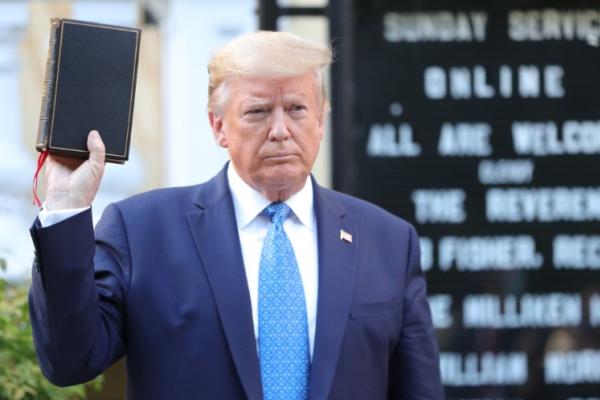Jun 15, 2020
After the smoke cleared from “The Battle of Lafayette Square” and the cringeworthy visit by the first couple to the St. John Paul II National Shrine was over, most Americans missed what was supposed to be the crown jewel of the Trump religion propaganda trifecta: the signing of an executive order on international religious freedom.
Read the Full Article

Already a subscriber? Login


